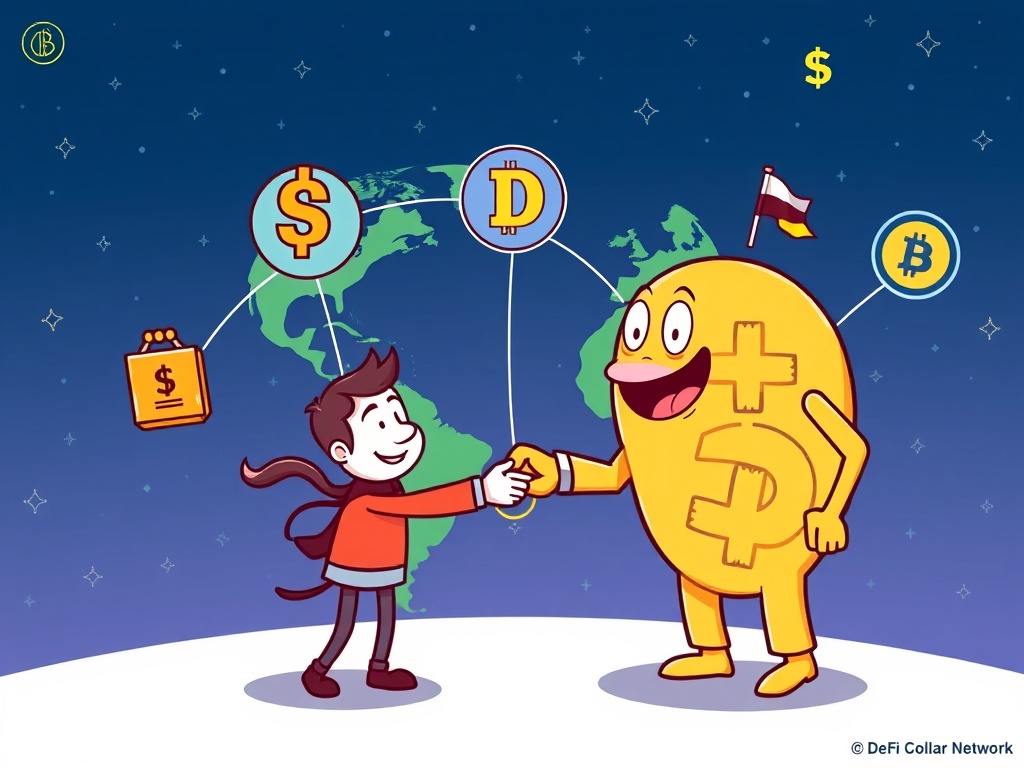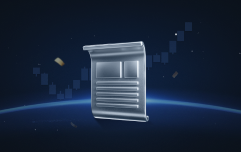DeFi Development’s Revolutionary Leap: Joining the Global Dollar Network
BitcoinWorld
DeFi Development’s Revolutionary Leap: Joining the Global Dollar Network
The world of decentralized finance (DeFi) is constantly evolving, and a recent announcement marks a significant milestone. Nasdaq-listed DeFi Development, a prominent player known for incorporating SOL as a key asset, has officially joined the Global Dollar Network (GDN). This strategic move promises to reshape how we interact with stablecoins and expand accessibility across the digital finance landscape. It’s a powerful step forward for DeFi Development and the broader crypto community.
What is the Global Dollar Network and Why Does it Matter for DeFi Development?
The Global Dollar Network (GDN) is an ambitious initiative designed to accelerate the global adoption of stablecoins. It’s a collaborative effort launched by industry giants such as Anchorage Digital, Paxos, and Robinhood. Their primary goal? To create a robust infrastructure that supports Paxos’s U.S. dollar-pegged stablecoin, USDG, making it more accessible and usable worldwide.
For DeFi Development, joining the GDN means much more than just a new partnership. It signifies a direct integration into a powerful network aimed at standardizing and simplifying stablecoin transactions. This move allows DeFi Development to directly tap into a broader ecosystem of financial institutions and users, enhancing its offerings and solidifying its position in the market.
- Increased Accessibility: Users of DeFi Development platforms will gain easier access to USDG, a highly liquid and regulated stablecoin.
- Enhanced Liquidity: Integration with GDN can lead to deeper liquidity pools for USDG within DeFi Development’s systems.
- Broader Reach: Taps into the established networks of GDN partners, potentially attracting new users and institutional interest to DeFi Development.
How Does This Partnership Propel Stablecoin Adoption for DeFi Development?
The integration of USDG into DeFi Development‘s systems is a game-changer. Stablecoins are crucial bridges between traditional finance and the crypto world, offering stability amidst volatile markets. By embracing USDG, DeFi Development is not just adding another asset; it’s endorsing a regulated, transparent, and widely supported stablecoin.
This partnership underscores a growing trend towards institutional-grade stablecoin solutions within DeFi. Nasdaq-listed companies like DeFi Development bring a level of trust and regulatory compliance that is essential for mainstream adoption. Furthermore, the inclusion of SOL as a key asset within DeFi Development’s framework, now complemented by USDG, creates a compelling blend of high-performance blockchain technology and stable value.
The collaboration aims to:
- Streamline Transactions: Make stablecoin transfers faster and more efficient for DeFi Development users.
- Boost Trust: Leverage the reputation of GDN partners and Paxos’s regulated USDG to build confidence.
- Foster Innovation: Open new avenues for financial products and services built on a reliable stablecoin foundation within the DeFi Development ecosystem.
What’s Next for DeFi Development and the Global Dollar Network?
The future looks promising for this alliance. DeFi Development’s plan to integrate USDG into its systems is just the beginning. This integration will likely involve technical development to ensure seamless user experience and robust security. We can anticipate new features and functionalities emerging from this partnership, designed to maximize the utility of USDG within DeFi Development’s offerings.
While the benefits are clear, challenges might include navigating evolving regulatory landscapes and ensuring interoperability across diverse blockchain environments. However, the combined expertise of DeFi Development and the GDN partners positions them well to overcome these hurdles. This strategic alliance sets a precedent for how established financial players and innovative DeFi platforms can collaborate to build a more integrated and accessible global financial system.
In essence, this move by DeFi Development isn’t just about joining a network; it’s about actively shaping the future of digital finance. It reinforces the idea that stablecoins are foundational to this future, providing the stability and reliability needed for widespread adoption.
In conclusion, DeFi Development‘s decision to join the Global Dollar Network marks a pivotal moment for both entities and the wider crypto industry. By integrating USDG, a regulated dollar-pegged stablecoin, DeFi Development is not only expanding accessibility for its users but also contributing significantly to the mainstream adoption of stablecoins. This collaboration promises a more stable, accessible, and integrated future for decentralized finance, showcasing a powerful synergy between innovation and established financial infrastructure. It’s an exciting time to watch how DeFi Development continues to evolve and lead in this dynamic space.
Frequently Asked Questions about DeFi Development and GDN
- What is the Global Dollar Network (GDN)?
The Global Dollar Network (GDN) is an initiative launched by partners like Anchorage Digital, Paxos, and Robinhood to accelerate the global adoption of stablecoins, specifically supporting Paxos’s USDG. - Why is DeFi Development joining the GDN significant?
This move is significant because it allows Nasdaq-listed DeFi Development to integrate a regulated stablecoin (USDG) into its systems, expanding accessibility, enhancing liquidity, and broadening its reach within the digital finance ecosystem. - What is USDG?
USDG is a U.S. dollar-pegged stablecoin supported by Paxos, designed to offer stability and transparency in the cryptocurrency market. - How will this partnership benefit users of DeFi Development?
Users will benefit from easier access to a regulated stablecoin, potentially faster and more efficient transactions, and a more robust and trustworthy platform for their DeFi activities. - Does DeFi Development use other assets besides USDG?
Yes, DeFi Development has already incorporated SOL as a key asset, demonstrating its commitment to diverse and high-performance blockchain technologies.
Found this insight into DeFi Development‘s strategic move compelling? Share this article with your network and spark a conversation about the future of stablecoins and decentralized finance! Your engagement helps us bring more valuable crypto news to the forefront.
To learn more about the latest DeFi Development trends, explore our article on key developments shaping DeFi Development‘s institutional adoption.
This post DeFi Development’s Revolutionary Leap: Joining the Global Dollar Network first appeared on BitcoinWorld and is written by Editorial Team
You May Also Like

DOJ seeks forfeiture of $225m tied to crypto ‘pig butchering’ scams

A complete analysis of my stablecoin income strategy with a monthly income of $500,000 and an average annualized return of 78%.
